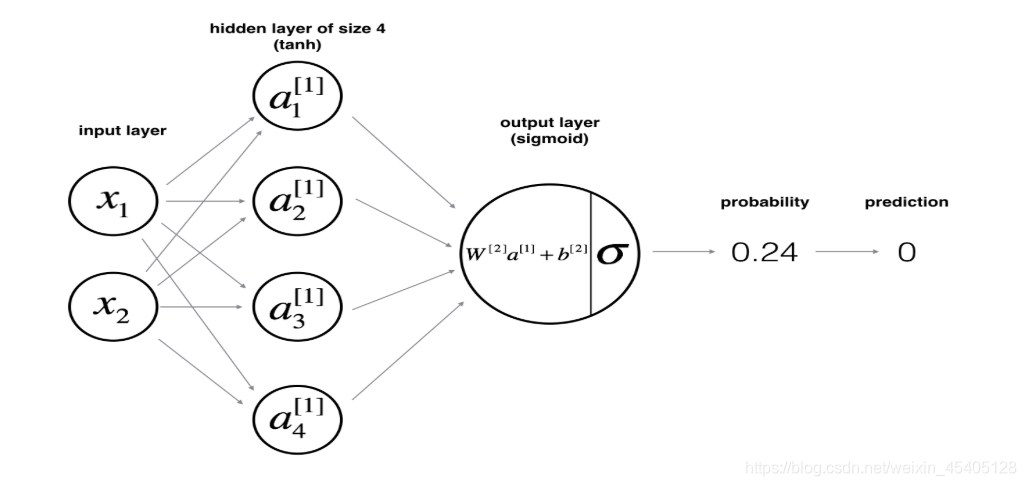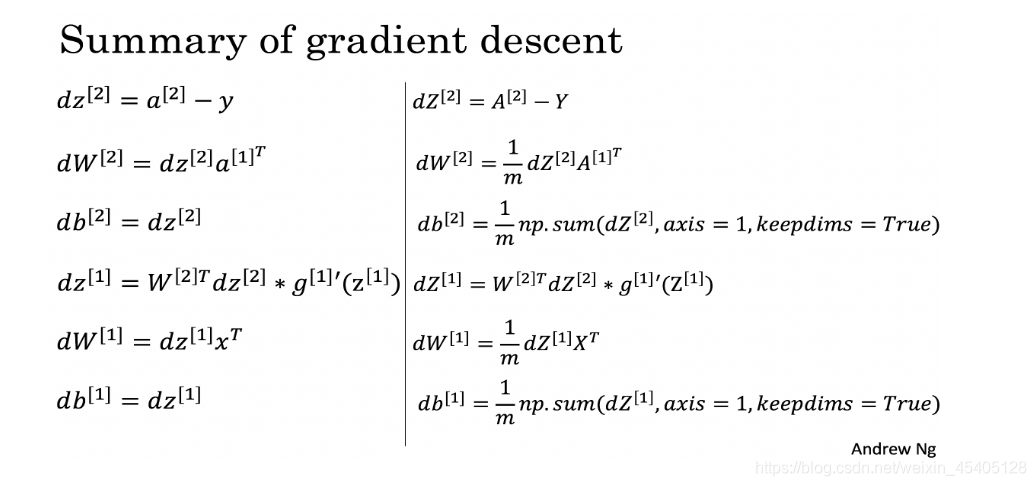

(you can use either np.multiply() and then np.sum() or directly np.dot()).
Note that if you use np.multiply followed by np.sum the end result will be a type float, whereas if you use np.dot, the result will be a 2D numpy array. We can use np.squeeze() to remove redundant dimensions (in the case of single float, this will be reduced to a zero-dimension array). We can cast the array as a type float using float().
logprobs = np.multiply(np.log(A2),Y)
cost = - np.sum(logprobs)







 本文介绍了如何使用NumPy库中的np.dot和np.multiply函数来计算成本,通过np.multiply进行元素级乘法,然后使用np.sum求和,或者直接使用np.dot计算矩阵乘法。文中还提到了结果类型的不同,np.multiply和np.sum组合使用会得到浮点数,而np.dot则返回一个二维数组,可以使用np.squeeze去除冗余维度。
本文介绍了如何使用NumPy库中的np.dot和np.multiply函数来计算成本,通过np.multiply进行元素级乘法,然后使用np.sum求和,或者直接使用np.dot计算矩阵乘法。文中还提到了结果类型的不同,np.multiply和np.sum组合使用会得到浮点数,而np.dot则返回一个二维数组,可以使用np.squeeze去除冗余维度。
















 171
171

 被折叠的 条评论
为什么被折叠?
被折叠的 条评论
为什么被折叠?








